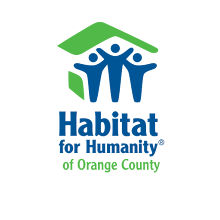 me from Habitat for Humanity Orange County in 2006. After Luis moved into his new home, he was inspired to raise money to help build more Habitat homes so that "other kids have a house like mine."
me from Habitat for Humanity Orange County in 2006. After Luis moved into his new home, he was inspired to raise money to help build more Habitat homes so that "other kids have a house like mine."Luis started to raise funds by hosting garage sales, where he sold his outgrown toys. He then created a house-shaped bank and painted it. Everyday, he would add some coins to the bank and on December 16 of each year (the day he moved into his home) he would bring his proceeds to the Habitat for Humanity of Orange County office to help build another affordable home. Luis' dream established the Luis House Neighborhood project.
Furthering his dream, Luis Houses (a house-shaped bank) are available for purchase. Children can buy the house/bank material, build and decorate them. They can use any creative method they choose to collect funds and fill their house/bank with funds to benefit Habitat for Humanity of Orange County.
Habitat for Humanity of Orange County is partnering with Pretend City Children's Museum, a nonprofit edu
 cational organization, under the theme of "Constructing Kindness" to help raise money to build affordable homes for children and families, while also building the Pretend City community. Museum visitors will have an opportunity to purchase Luis Houses for a small donation as part of the Luis House Neighborhood project.
cational organization, under the theme of "Constructing Kindness" to help raise money to build affordable homes for children and families, while also building the Pretend City community. Museum visitors will have an opportunity to purchase Luis Houses for a small donation as part of the Luis House Neighborhood project.Children who purchase a Luis House will be invited to a special event held at Pretend City on December 14, 2010 from 3:00 p.m. to 6:00 p.m. At this event, children will bring the money they've collected and all proceeds will be split between Habitat for Humanity of Orange County and Pretend City Children's Museum.
To order your Luis House Bank or for more information on the event, please contact Aimee@habitatoc.org.
 Our 9
Our 9 

















.JPG)
 Hello again, friends! I apologize for missing a couple of entries; we've been busy this month. While I was away from the blog, I had time to think about what my next entry and I decided to write about our chair of board of directors, Brett Mansfield.
Hello again, friends! I apologize for missing a couple of entries; we've been busy this month. While I was away from the blog, I had time to think about what my next entry and I decided to write about our chair of board of directors, Brett Mansfield.



